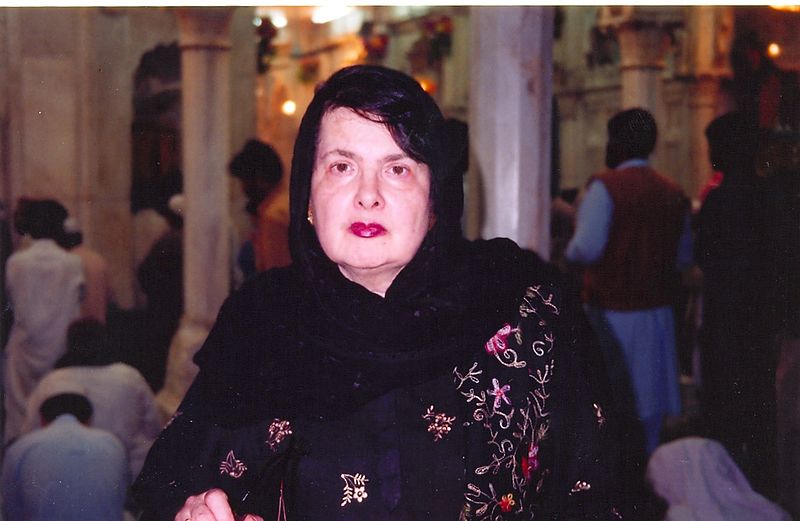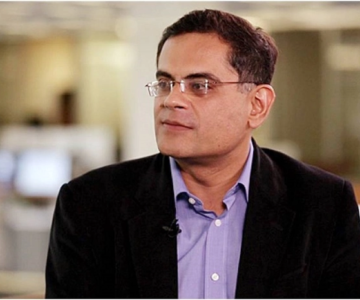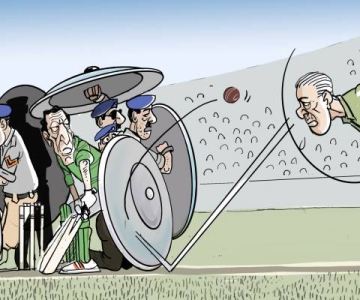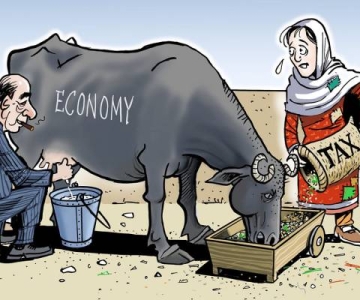There is no city like Lahore/ Everything that is wrong is set right here
It is a mystery as to how a layered city such as Lahore has attracted little scholarship in the past few decades. This is why Anna Suvorova’s book “Lahore -Topohilia of Space and Place” is a major book of our times. Suvorova is a distinguished scholar and currently heads the Department of Asian Literatures at the Institute of Oriental Studies, Russian Academy of Sciences. Her earlier works on Urdu, Sufism and numerous translations of Urdu prose works are well known. This book, while a work of formidable scholarship is distinctive for its personal dimension. Like countless others, Suvorova is an ardent admirer of Lahore and tells us why Lahore has survived historical vicissitudes and also why its memory is so lovingly remembered, invoked and reproduced.
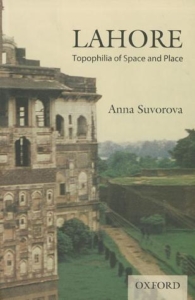
Anna Suvorova
Hardback, Nov 2011
Price: Rs.925.00
Oxford University Press, Pakistan
Suvorova begins the book following the style of an oracle and explains why she chose to explore the topophilia, literally ‘love for a place’. This apparently simple term, as we finish the first very chapter, becomes a kaleidoscope to view the boundless affection that many across the globe experience vis a vis Lahore. Suvorova is one of such Lahore-philes, if one can be excused for inventing such a term. Her fascination for Lahore, as it emerges in her book, is evident throughout the narrative as she takes the reader into the labyrinth of history, cultural memory, urban geography, and sociology of the city.
This affinity for an intriguing city therefore places Suvorova in a unique position as she documents Lahore’s myriad facets, not as an orientalist outsider, but asan enchanted scholar and a traveller who has developed an uncanny empathy with the topophilia that defines Lahore as a construct of memory and consciousness. Thus follows an eclectic narrative employing an interdisciplinary approach, which successfully attempts to undo the academic tone while avoiding populist, market driven cliches that comprise many contemporary travel accounts. She describes this rather well: “When we visit Oslo, Dublin, Paris, or Lahore it is difficult, at first, to separate the living images of the new places from the “mental maps” that we have drawn up in the footsteps, and along the routes, of literary characters…It is topophilia that overcomes our eternal fear of space, and emotion dumbness and gives us a living feeling of longing to a place- the sense of city.”
The book is divided into eight chapters, which tread on the various cultural nodes of Lahore’s past and present. The epilogue entitled ‘Lahore vs. Lucknow’, is an outstanding inquiry on these two cities famed for their topophilia. Suvorova tells us how Lahore’s topophilia is different from Lucknow. She is also quick to note the similarities between these two great cities, but she admits that she fell inlove with Lahore in 1997 during her first visit despite her intense familiarity with Lucknow.
Suvorova has devoted a fair amount of research and reflection to construct the rich, contradictory mosaic of what HiraMandi stands for… “For the sake of aesthetic pleasure and in the memory of the glorious past, Lahoris are willing to pardon all sins…”
The chapter entitled “Lahore is Lahore” is a memorable documentation of the most famous saying in Punjabi, lahaur lahaur hai. Suvorova uses PitrasBukhari’s timeless essay, “Geography of Lahore”, and its fluid, expansive wit to examine the kind of devotion that Lahore engenders. Suvorova rightly tells us that Lahore’s Inner Walled City, (or Anderoon Shehr) is struggling to survive as a relic of the pre-industrial era in a world that essentially is post-industrial. Concluding her discussion she writes: “As the city that was built on by people who had converted to Islam, and had already developed their own pre-Islamic urban culture”, Lahore brings together ‘The City of God’ and ‘The City models’. I haven’t read for a long time something that can be termed as insightful as this passage: “[Lahore] turns to Mecca during prayer, preserves the memory of its imperial past, and considers itself to be a megalopolis similar to Rome. As the city founded by the son of a deity, and built by a hero of poetry and legend, Lahore lives in several temporal dimensions simultaneously, like Jerusalem. It is both timeless, existing in the source of medieval hagiography, and modern, living on the ‘mental maps’ of psychogeography.”
This “psychogeography” is another underlying theme that continues to unfold, as the narrative evolves. In chapter 3, Suvorova explores the ‘cultural’ and ‘chorological’ image that characterizes “the spiritual and emotional ties between the physical environment, and human beings, in Muslim Lahore’ and how they tookthe “shape between the mosque and the tomb.” Suvorova shows us why mosques and tombs are fundamental or power points on the city’s ‘mental map’. Reading through a layered expose of the inter-textual meanings and their overlapping, I recognized my own topophilia as Lahore’s mental map for me holds the Data Darbar as its very centre.
My favourite chapter of Suvorova’s tender book is the one on Lahore’s legend – “The immured bride”, ie. Anarkali. Lahore is not the only city to have this legend etched in its collective memory. Several old Asian and European cities have similar legends, which keep their cultural memory alive. Suvorovaelaborates on the embedded patriarchy inAnarkali’s tale; and is astute to note how the “romantic legend and an artistic image has also generated a ‘star factory’ in which anyone can become the one and only Anarkali”.
The book also remembers the great ‘flaneurs’ of Lahore: Manto, Intizar Hussain, Bapsi Sidhwa, among others whose immortal descriptions of the city feed into the enduring topophilia. The chapter “Bread and Games!” remembers the Pak Tea House as well. Muhammad Umer Memon’s quote defines this tea house rather aptly: ” It was everything the society at large was not…it was a place where dreams could be dreamed, where time and history could be held at bay”. This chapter also takes us through the various stages of Basant festival, the food street, paanwala shops and the ambivalent marker of Lahore’s identity – the Hira Mandi. Suvorova has devoted a fair amount of research and reflection to construct the rich, contradictory mosaic of what the settlement stands for. She concludes:”…the sublimatory aspect of art is highly pronounced here:art as a means of pacifying the ‘seething cauldron of excitations’ of the unconscious. For the sake of aesthetic pleasure and in the memory of the glorious past, Lahoris are willing to pardon all sins…”.
Suvorova’s writing is neither chronological nor a summation of all that has been said about Lahore. She employs a good range of the historical and contemporary references and weaves them into wondrous expressions of topophilia. The chapter entitled “The City of Dreadful Night” is a fascinating account of texts written on Lahore. Aside from the well-known colonial writers, Urdu literature also finds a place in her narrative. Iqbal’s early collection, Bang-dara (The Sound of Caravan Bell) has a poem Kinar-e-Ravi and the following verses encapsulate the link between past, present and human fate: “This place is the tale of revolution’s tyranny/This place is some book of bygone age”.
The final chapter walks into history like a scholarly ‘flaneur’ and traverses the most loved street: The Mall or thandee sarak (cool street) as it was known earlier. There is enough in Surovova’s account to surprise even those who are familiar with the history and spatial memory of this road. The Mall, as the author concludes “is an intermediary, or transitory zone that spatially and historically connects the medieval feudal city with the modern megalopolis.
The last major book on Lahore by Samina Quraishi was published in 1988. Pran Neville’s touching memoir of Lahore was printed in 2006. The Urdu books to be published are largely personal accounts. Other books published in the recent years document selected aspects of city’s varied history. Suvorova puts all of them together and creates a new lens to look at ancient and modern Lahore.
Above all this book has been dedicated to Dr Durre S Ahmed, addressed by the author as “the pearl of Lahore” and for all the right reasons. Ahmed is an academic, scholar and writer of international repute and represents a vital slice of Lahore’s topophila for many, including this writer.
